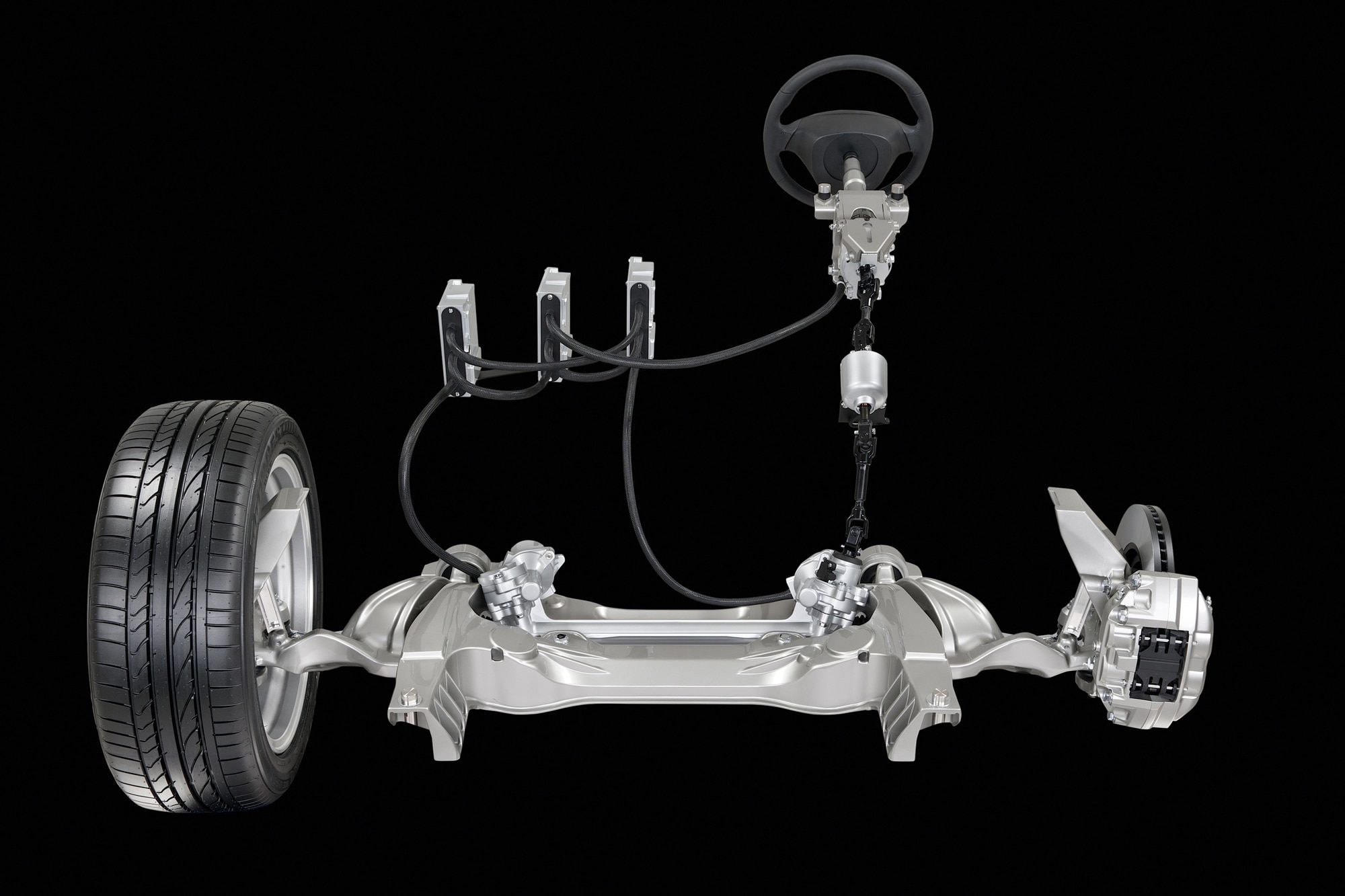What is Steer-by-Wire?
Digital steering may sound like science fiction, but it’s already on the way to showrooms.
 Infiniti
Infiniti
The idea of turning corners with a steering wheel that isn’t directly connected to the front wheels seems like a radical concept, but that’s exactly what “steer-by-wire” means: There’s no physical connection linking the movement of the driver’s hands to the front wheels. Not to worry, it’s based on long-proven technology. You’ve almost certainly flown on airplanes that operate using the same principle.
The broader concept is called drive-by-wire—or fly-by-wire for airplanes—and it uses sensors to detect inputs from a steering wheel, pedal, or joystick, which a computer then translates to actions. Airbus A320 airliners adopted fly-by-wire in the late 1980s, and the systems soon became widespread. New cars have used an electronic accelerator pedal for decades, and brake-by-wire tech is increasingly seen in road vehicles.
Still, steer-by-wire for the road is just arriving. Here’s how it works, and what you should know.
What are the Pros and Cons of Steer-by-Wire?
A steer-by-wire system has no permanent mechanical connection between the steering wheel and the hardware that turns the front wheels left and right, though there may be a backup system that takes over in case of an electronic failure.
Eliminating mechanical steering components can reduce weight and costs as well as increase interior space and improve crash safety. The steering ratio can also be altered based on vehicle speed or a selectable driving mode, making it possible to perform turns with less rotation of the steering wheel. At slow speeds, that feature can be used to make U-turns and parking easier.
Steer-by-wire, which builds on the switch from hydraulically assisted power steering systems to the now common electrically assisted power steering, also makes adding driver assistance features—and future self-driving technologies—simpler. ZF, a prominent German automotive supplier, has developed a steer-by-wire system that it says could bring safety benefits like preventing a car’s rear end from sliding in turns.
Since steer-by-wire is controlled by a computer, it’s theoretically possible for these systems to be compromised by a hacker or to fail because of faulty programming or defective components. But the systems incorporate multiple redundant safety measures engineered to avoid any single point of failure or broken part causing significant issues.
What Vehicles Use Steer-by-Wire?
Steer-by-wire made its commercial debut in the 2014 Infiniti Q50 sedan and is currently offered as an option on the QX50 and QX55 compact crossovers as well as the Q60 coupe. Infiniti calls it Direct Adaptive Steering and notes that “the DAS is unaffected by the kickback and forced movement of conventional steering” (the Q50 no longer offers this system in the United States).
In some markets outside of the United States, the Toyota bZ4X electric crossover will have an available steer-by-wire system. The system allows the front wheels to cover their full range of motion with just 150 degrees (less than half of a full turn) of steering-wheel lock. Conventional cars typically require two or more turns of the steering wheel (the Subaru Solterra EV, based on the same platform as the bZ4X, won’t offer the steer-by-wire system in the U.S. either).
Steer-by-wire is commonly used to enable rear-wheel steering, which improves maneuverability and handling. Both the GMC Hummer EV and the upcoming Chevrolet Silverado EV benefit from this application of the technology.
Is Steer-by-Wire Safe?
By-wire technology has been used in aviation for decades without issue. Redundant systems employ sensors to both determine what actions are requested and to detect problems. Some systems, including Infiniti’s steer-by-wire, provide a mechanical backup, in which a physical connection between the steering wheel and the front wheels engages if a fault is detected. As the technology evolves and is proven safe and reliable, these backups are likely to become increasingly rare.
Written by humans.
Edited by humans.
 Jordan Golson
Jordan GolsonJordan Golson is a transportation reporter covering cars, trains, planes, future cities, mobility and more — basically, if it moves and doesn’t go to space, he's on it. He is especially interested in the intersection of transportation and technology, and that means he goes deep into electric cars, autonomous vehicle tech, sensors, safety, connectivity, and similar topics.
Related articles
View more related articles